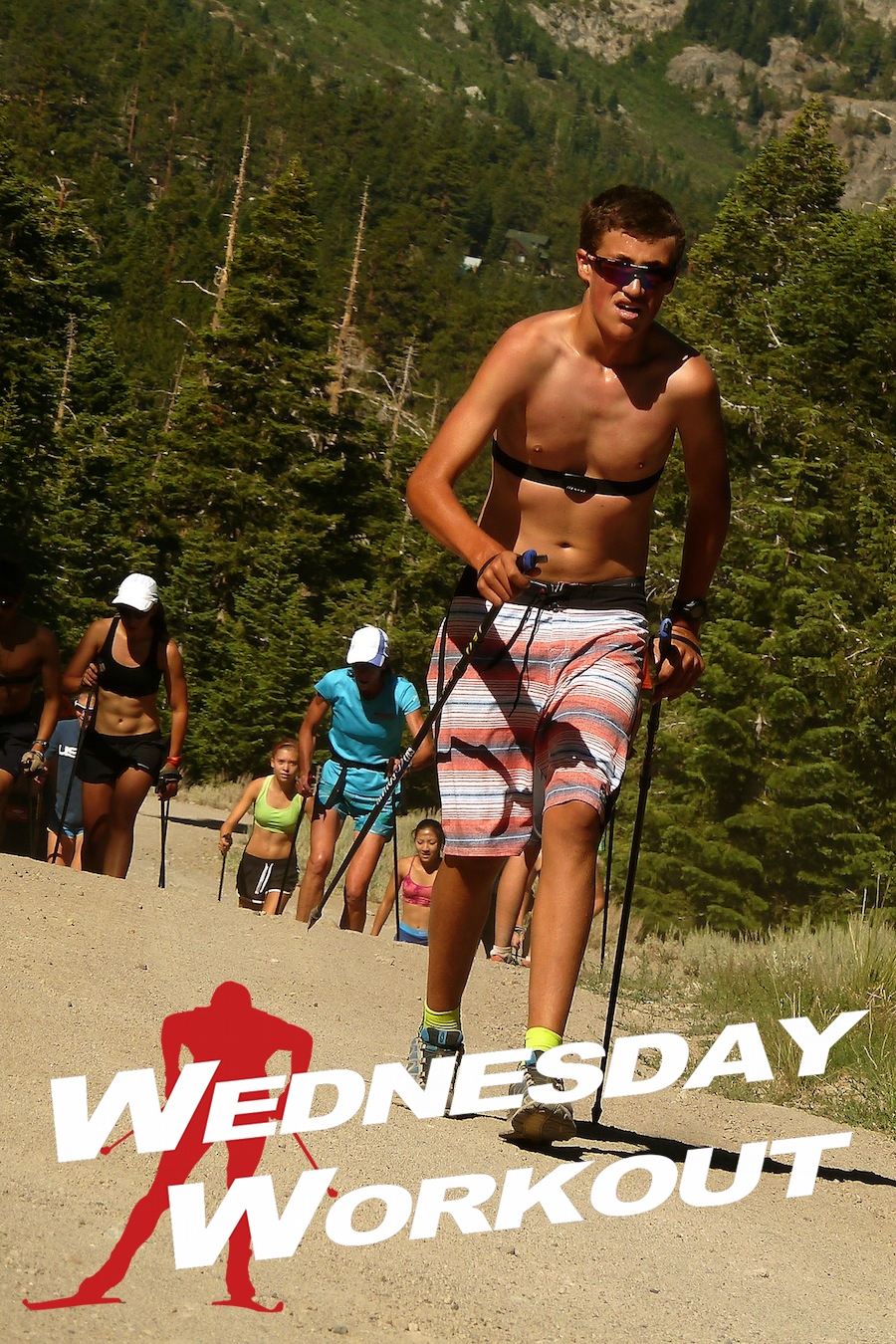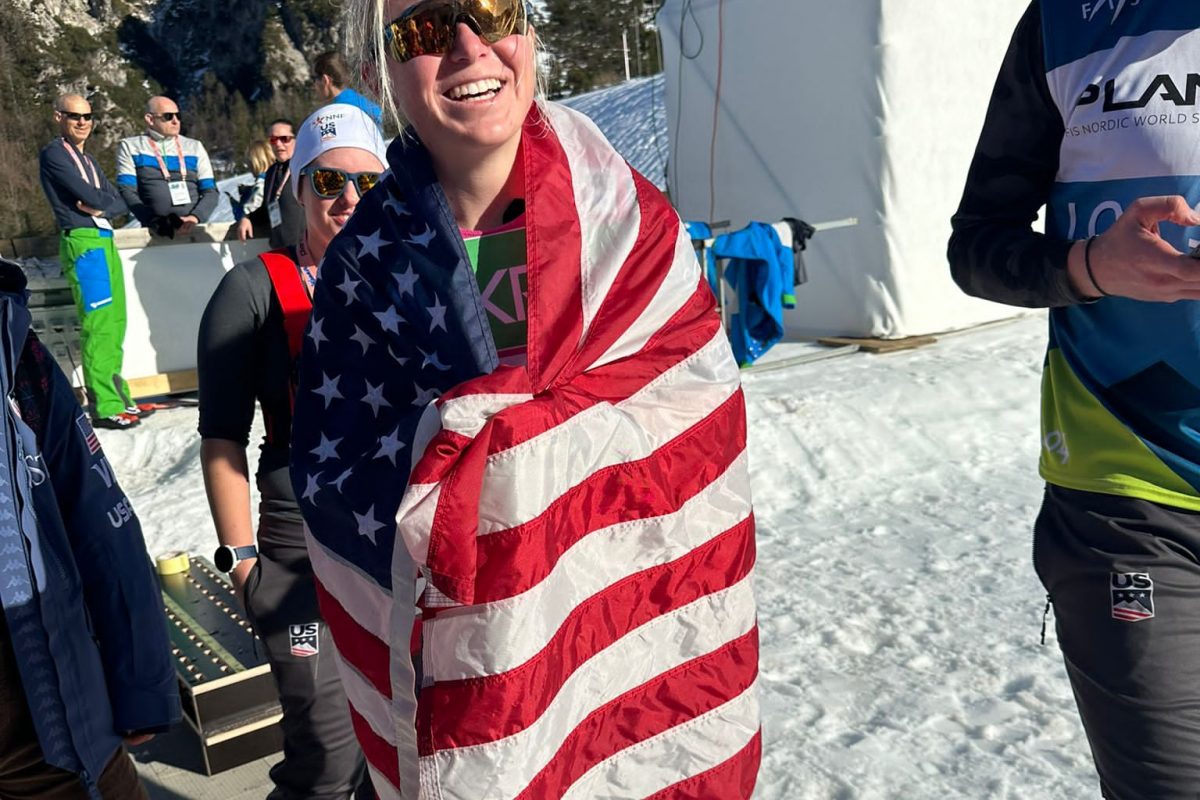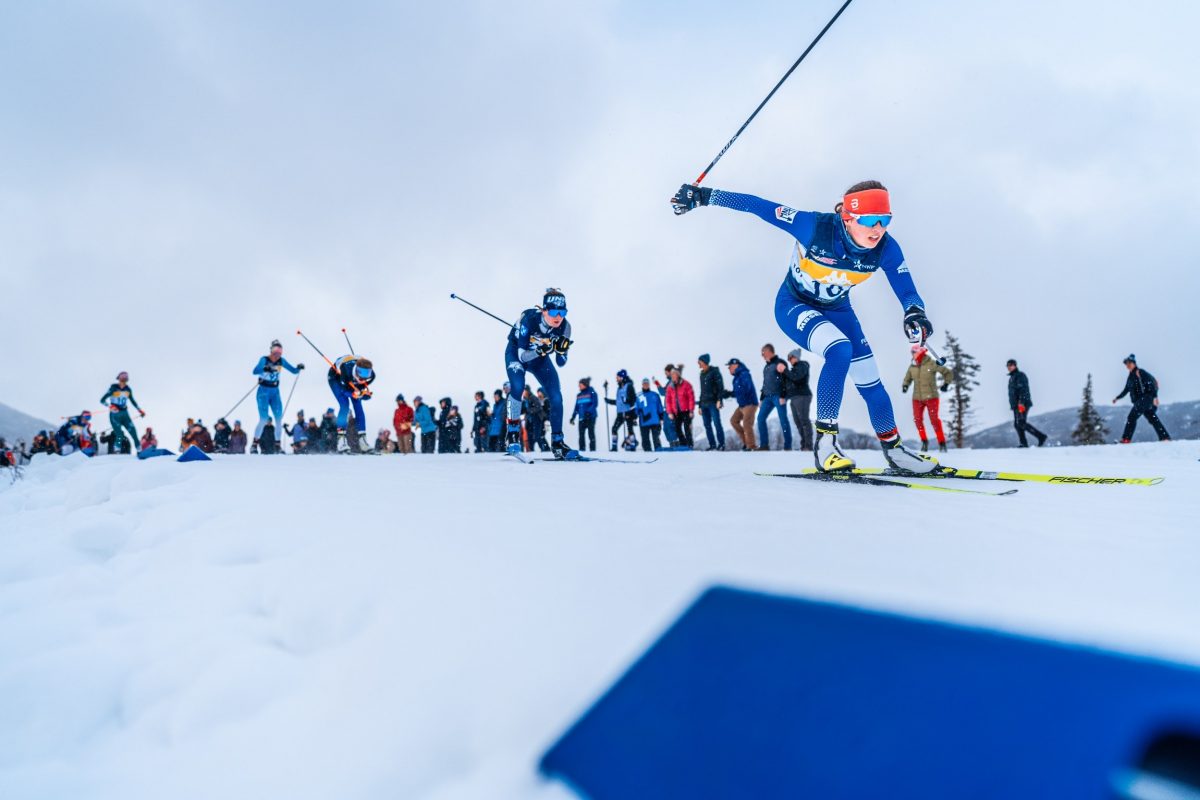
Ski walking, hill bounding, and moose hoofing are a great way to incorporate ski-specific movements into a dryland workout. There are many ways to use these training tools, but I am going to recommend a favorite interval workout that touches on all three techniques. This low-impact workout works great for skiers of all ages and abilities, from juniors to masters.
” It helps to think of a deer bounding through the forest. The deer’s feet briefly make contact with the ground, and then it is flying forward with all four feet off the ground.” — Nancy Fiddler’s description of hill bounding
I was introduced to foot-specific training back in the late ’80s by my U.S. Ski Team coach, Torbjørn Karlsen. Although much has changed about skiing since then, this type of training, which mimics the diagonal stride movement, remains highly valuable to cross-country skiers today.
Ski walking is diagonal striding without the glide. Think of the arm and leg swing as pendulums while striding on foot up a gradual incline. It’s key to not reach too far up the hill with the foot and to make a complete weight transfer (hip over foot) upon footfall.
Add poles, and ski walking is highly specific. It is important to have ski poles that are about sternum-high in height, or about 10 cm shorter than your classic poles. While ski walking, keep the poles angled so that the hands are low and the arms can swing freely forward. The hand is pushing the pole down and back, finishing just past the upper leg. The pole will plant further back than when on skis.
Hill bounding resembles striding up a steep hill on skis. It is more explosive than ski walking and it helps to think of a deer bounding through the forest. The deer’s feet briefly make contact with the ground, and then it is flying forward with all four feet off the ground. To practice, start with a jog up a moderate hill, then make each footfall more explosive. Lifting the front knee will help extend the bound. Again poles are planted angled back with hands low. The kick will be assisted by the pole push.
Moose hoofing is similar to hill bounding, but less explosive, and therefore more sustainable for longer periods of time. Think of moose hoofing as a way to imitate the diagonal stride up a long, gradual hill. The timing of the kick and pole push remain synchronized, as in bounding, but not as snappy. I like to think of a moose shuffling through the forest, not in as big of a hurry as the bounding deer.

The Workout: 4’s and 1’s
Find a dirt or grass hill about 400 meters or more in length. The incline should be gentle to moderate and fairly consistent. Alpine ski areas and logging roads work great.
- Warm up: 15-20 min easy jogging. Add some gentle dynamic stretches and some arm and leg swings.
- Get explosive: Do a set of 6-10 hill bounds (15-20) sec each. Use the first one or two to coordinate technique and timing, and then work on popping off the ground with each bound. It is possible to do this with or without poles.
- Intervals: 4 minutes steady ski walking at a Level 3 effort. Walk back down the hill for recovery (recommend 3 minutes recovery), then moose hoof back up the hill for 1 minute. By the end of 1 minute, you will be in Level 4! Recover back down the hill for 1 minute then repeat the cycle. Depending on your fitness level and time of the year, try for 3-6 cycles of ski walking and moose hoofing.
- Cool down: 10-15 minutes of easy jogging.
- Equipment: running shoes, water bottle, and short ski poles.
Enjoy the workout!
Nancy Fiddler
Nancy Fiddler is a two-time Olympian and 14-time National Champion. She has been coaching juniors and masters for 20 years in Mammoth Lakes and Truckee, Calif., and most recently in Sun Valley, Idaho. She lives most of the time in the Eastern Sierra with her husband and daughter and is currently trying to get in touch with her creative side through writing.



